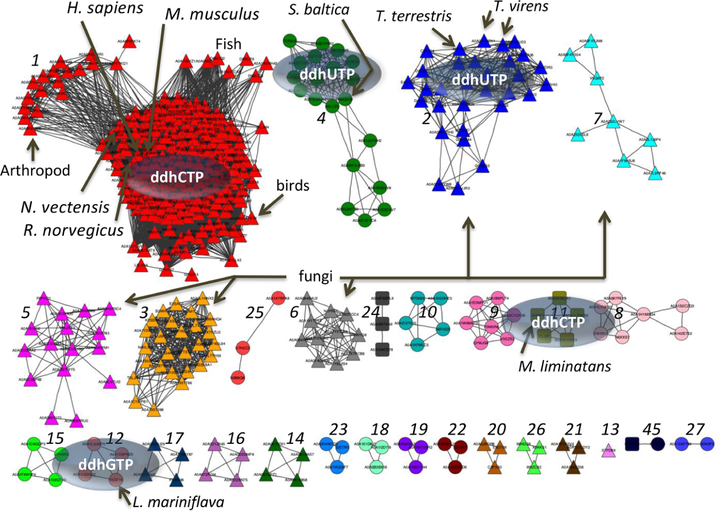Figure 7.
Sequence similarity network generated by using human viperin. Human viperin, Uniprot entry Q8WXG1, was used as the seed sequence (e value of 5, edge alignment score of 120) to generate a representative SSN. Eukaryotes (triangle nodes), bacteria (circle nodes), and archaea (square nodes) cluster largely with respect to evolutionary lineage, and each distinct cluster is represented by a unique color. Viperin-like enzymes characterized in this paper are labeled, and their corresponding ddhNTP is shown in the oval.

